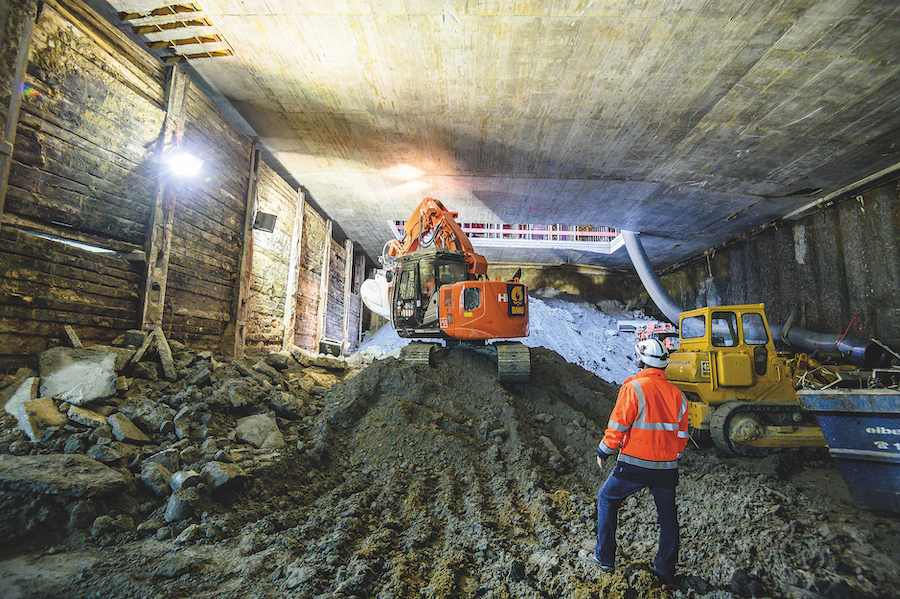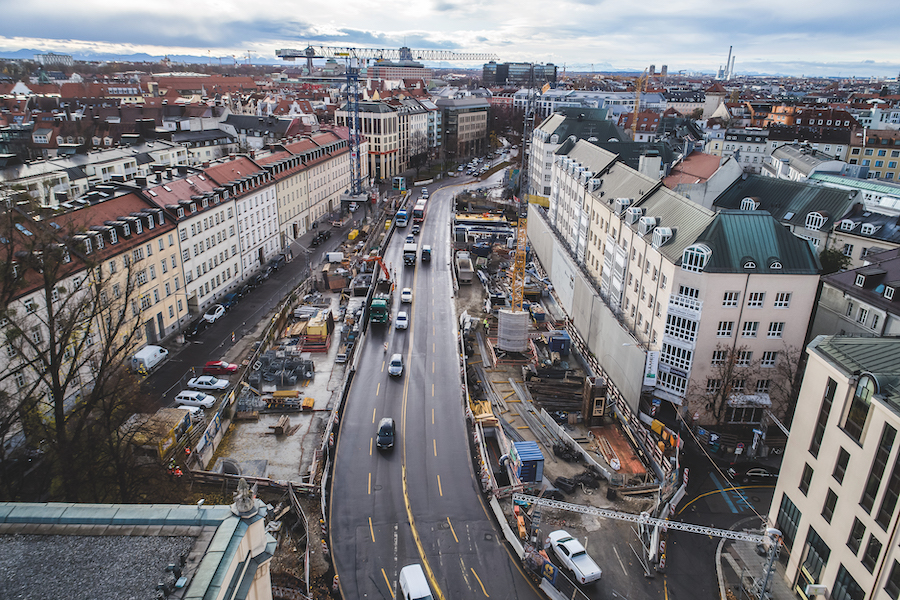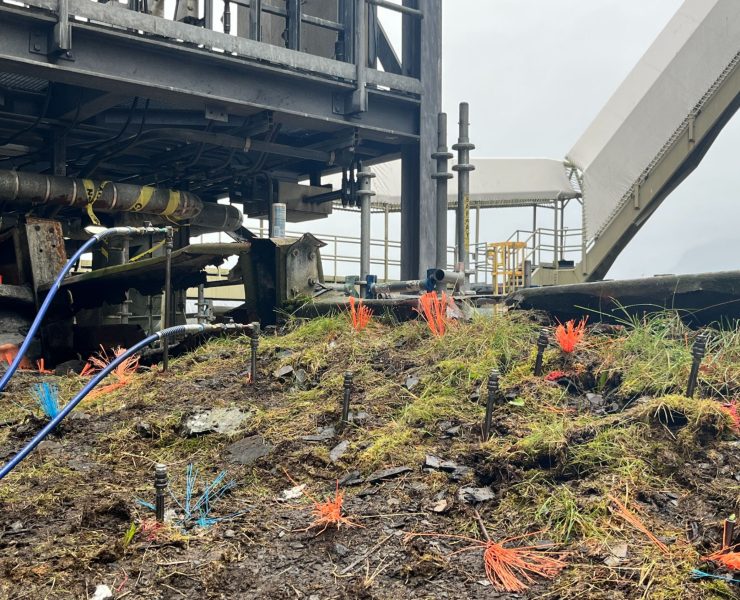Construction Site Turned Upside Down: Underground Construction Method at the Thomas-Wimmer-Ring in Munich


With approx. 390,000 commuters, the Bavarian capital is Germany’s top commuter city. The results are growing congestion, overcrowded trains, and a shortage of parking areas. To counteract the extreme lack of parking, an underground parking garage is being constructed right under the Altstadtring, at the eastern part of the ring road in the center of Munich, between Isartor and Maximilianstraße. Dimensions:
140 m long, 30-45 m wide, 13 m deep. To ensure continued traffic flow on two lanes during the construction phase and let 25,000 cars pass by the site with as little congestion as possible, the site has been divided up into two sections: East and West. The resulting two, extremely narrow sites within confined areas make for a real challenge. Bauer Umwelt, the environmental business division of BAUER Resources GmbH, was tasked with the excavation of both building pits.
But before excavation could begin, BAUER Spezialtiefbau GmbH erected a pile wall with a diameter of 88 cm. The wall acts as a protective structure for the excavation pit and is also the protective outer shell of the future underground garage.

In November 2017, excavation of the pit on the eastern side – with a volume of 40,000 m3 and a depth of up to 13 m – finally commenced. After completion of the eastern construction section in 2018, work on the western area began in the spring of 2019. But everything is different with this section, the site is literally turned upside down. The reason: The foundations of the adjacent neighboring building are too close to the excavation pit, and a tie back of the pile wall that would anchor it to the ground is not possible. Therefore, an underground construction method is used whereby the first lower level is mounted to the pile wall, so the shell is created from the top down. “The capping beam of the first lower level with an area of around 2,700 m2 and consisting of six concrete sections was completed over the winter months. Now the excavation can be done underground,” explains Christian Heinig, foreman at the environmental business division Bauer Umwelt of BAUER Resources GmbH. Using a mini digger, a tunnel construction digger and a caterpillar, a total of 18,000 m3 of soil are brought to the surface. The entire soil excavation in the west amounts to approx. 28,000 m . The cramped spatial conditions are of particular difficulty in the mining method. In some sections, the room height is just 4 m and only five employees can work here at the same time. “That’s why the planning and implementation of the underground excavation in the western section is regarded as one of the most spectacular building projects in Germany,” according to Thomas Reinthaler, Sales Manager for the south region of Bauer Umwelt, the environmental business division of BAUER Resources GmbH.
The work executed by Bauer is expected to be completed according to schedule by September 2020. From spring 2021, 520 vehicles will be able to find a parking space on three levels.

















